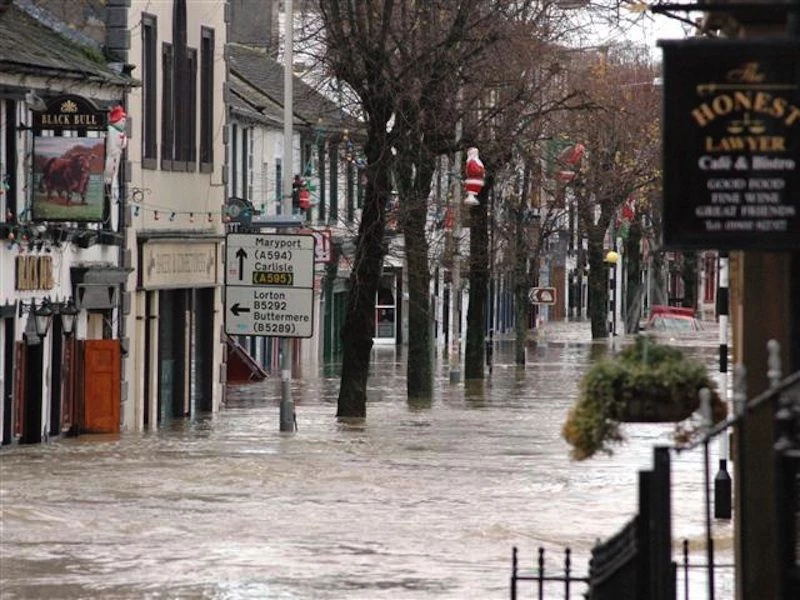
Partner Article
Don’t let flooding stop business as usual
It’s environment focus week on Bdaily, and we are looking at what the low-carbon economy really means for UK SMEs, as well as picking apart the nuts and bolts of adapting business to “go-green.“ Here Jen Atkinson of ClimateNE talks shares her expertise following this week’s intense rain.
Water-logged premises, destroyed stock, damaged equipment, and struggling to even get to work, are some of the impacts that businesses across the North East have faced during this week’s intense downpours and flooding.
It’s not the first time this year that torrential rain has caused widespread flooding and major disruption. We’re only just recovering from ‘Thunder Thursday’ in June, a day that wreaked havoc and ground the region to a halt, with costs estimated to be in the millions.
ClimateNE research shows that over 60 per cent of businesses across the North East have been adversely affected by severe weather over the past two years.
While extreme weather like this may be unusual, it is expected that intense rainfall events will be more frequent as our climate changes. This highlights how important it is for businesses to put in place contingency plans to address this risk – not only to minimise business disruption, but to secure its survival.
AXA Insurance estimates that 80 per cent of small businesses affected by major incidents, such as flooding, close within 18 months, while 90 per cent of businesses that lose data from disasters shut within two years.
While we can’t stop flooding, businesses can prepare and ensure that it does not have to lead to devastating consequences. Treating it as a more traditional risk, such as fire and theft, will help reduce the risk of water damage to premises and minimise costs of lost stock and equipment.
By first assessing risks you will be able to identify a range of simple measures to reduce the risk of water damage to your premises and minimise costs of lost stock and equipment.
Then formulating a basic flood plan will help you feel prepared and will go a long way to minimising disruption and costs. It should include a list of key contacts, such as customers and suppliers you need to contact and phone numbers for key members of staff. It should have a checklist on how to protect your property, such as instructions on backing up essential data and describe things that will need to be moved to a safe place.
Once you’ve finished the plan, spend time informing and training your staff and do test runs – much like you would for your fire drill.
It’s also important to review your insurance. A standard policy probably won’t cover you for flood damage to your property, stock and equipment.
A good place to start is the ClimateNE business hub website, which has advice and information specifically for businesses to manage climate risks.
The new government Climate Ready support service also provides online advice and guidance and a helpdesk to help businesses adapt to less certain weather in future.
Here are some other environment focus articles that may be of interest to you: carbon reporting in logistics firms; what are the benefits of electric vehicles?; we talk to a print business about why SMEs need to go green; find out how one innovative business is using ozone as a cleaning tool; what does sustainability really mean to your business?; funding support for green businesses; and a green adaptation case study.
This was posted in Bdaily's Members' News section by Jen Atkinson - ClimateNE .
Enjoy the read? Get Bdaily delivered.
Sign up to receive our daily bulletin, sent to your inbox, for free.








 How to make your growth strategy deliver in 2026
How to make your growth strategy deliver in 2026
 Powering a new wave of regional screen indies
Powering a new wave of regional screen indies
 A new year and a new outlook for property scene
A new year and a new outlook for property scene
 Zero per cent - but maximum brand exposure
Zero per cent - but maximum brand exposure
 We don’t talk about money stress enough
We don’t talk about money stress enough
 A year of resilience, growth and collaboration
A year of resilience, growth and collaboration
 Apprenticeships: Lower standards risk safety
Apprenticeships: Lower standards risk safety
 Keeping it reel: Creating video in an authenticity era
Keeping it reel: Creating video in an authenticity era
 Budget: Creating a more vibrant market economy
Budget: Creating a more vibrant market economy
 Celebrating excellence and community support
Celebrating excellence and community support
 The value of nurturing homegrown innovation
The value of nurturing homegrown innovation
 A dynamic, fair and innovative economy
A dynamic, fair and innovative economy